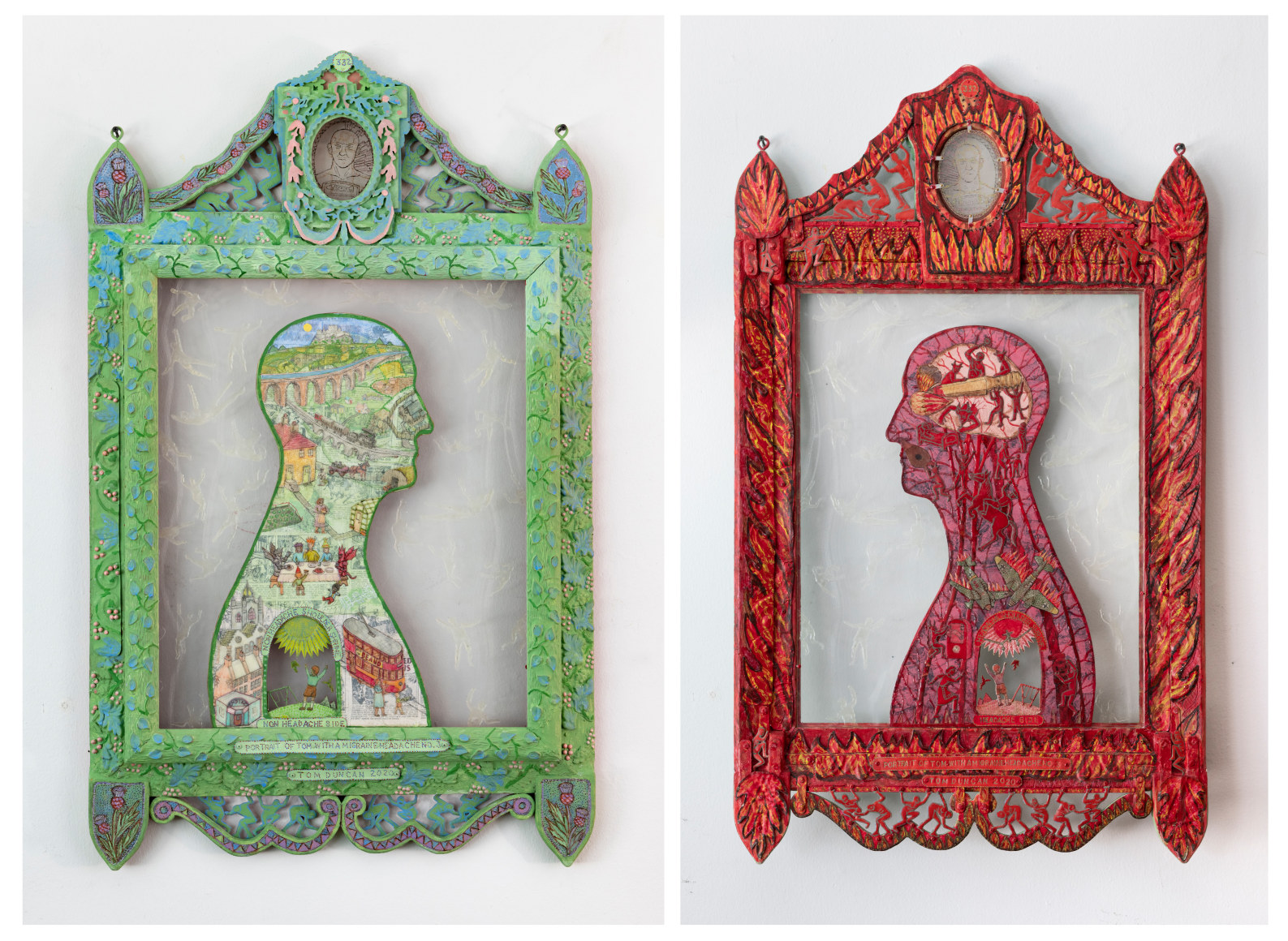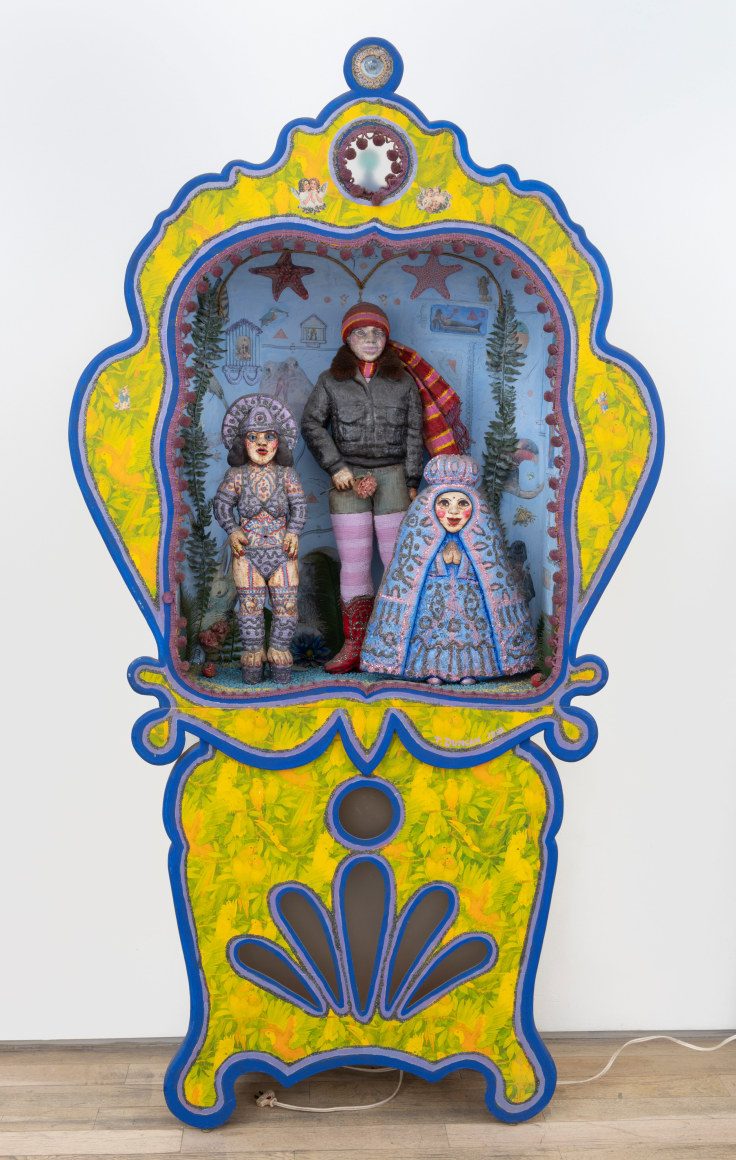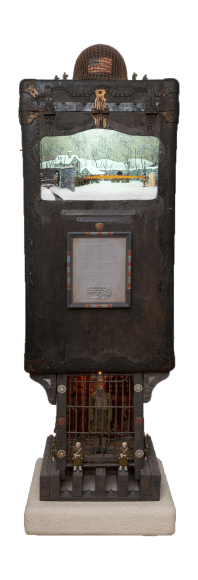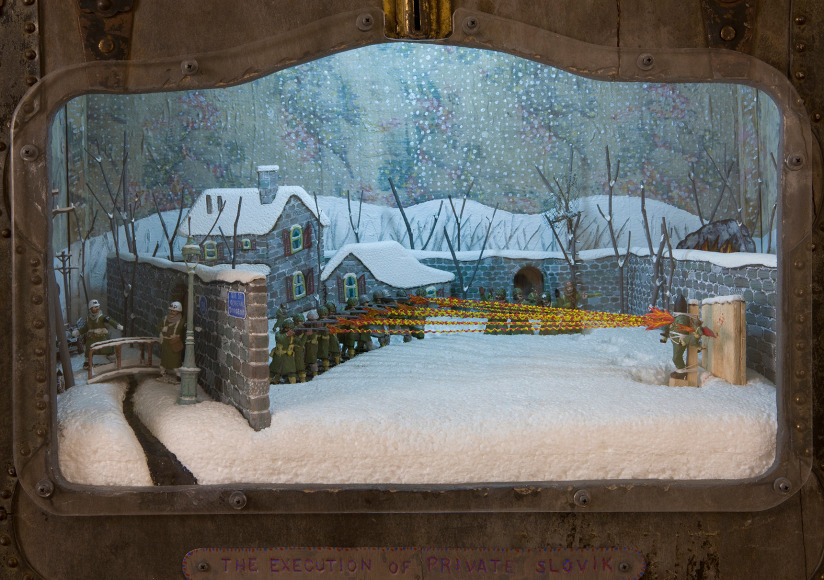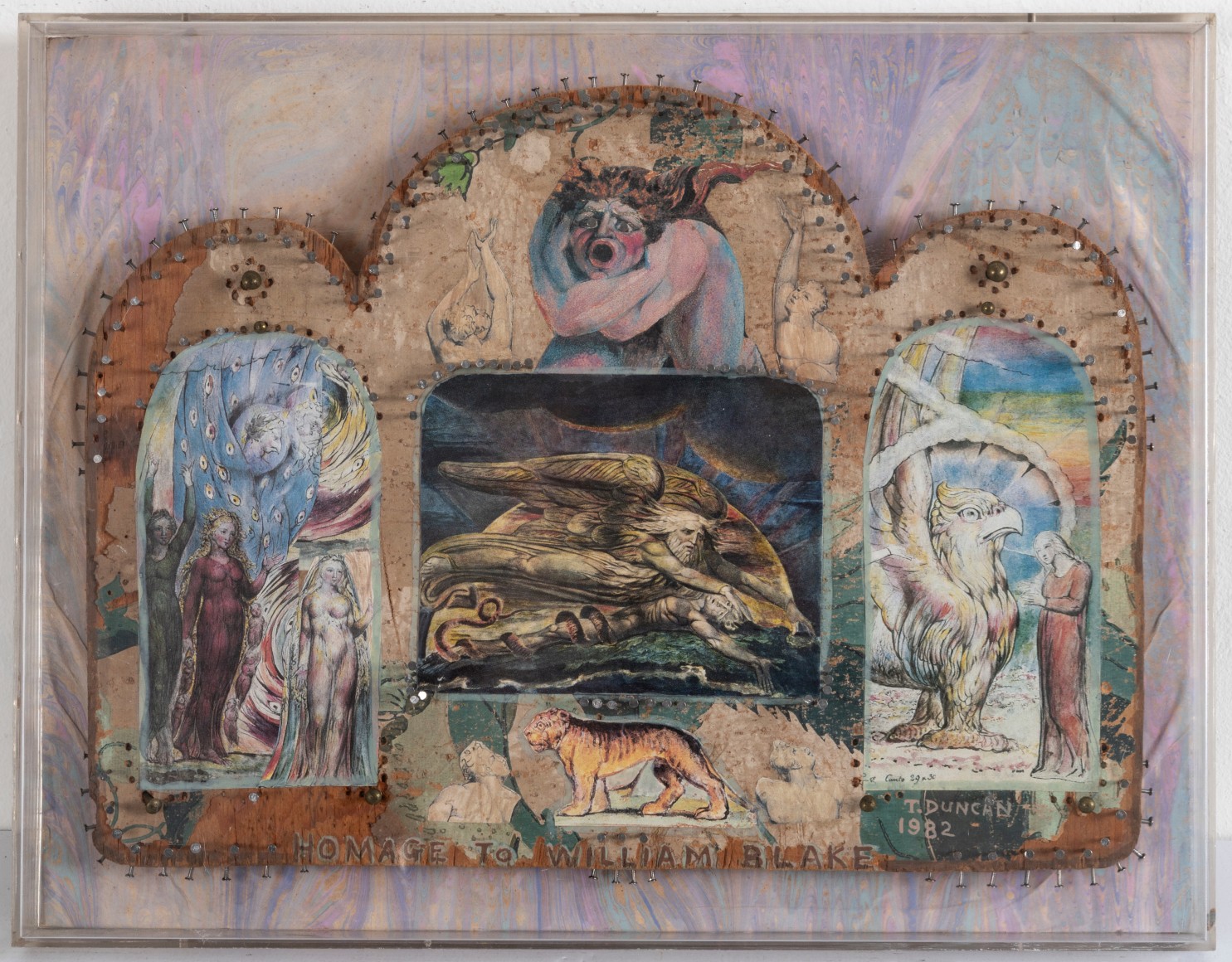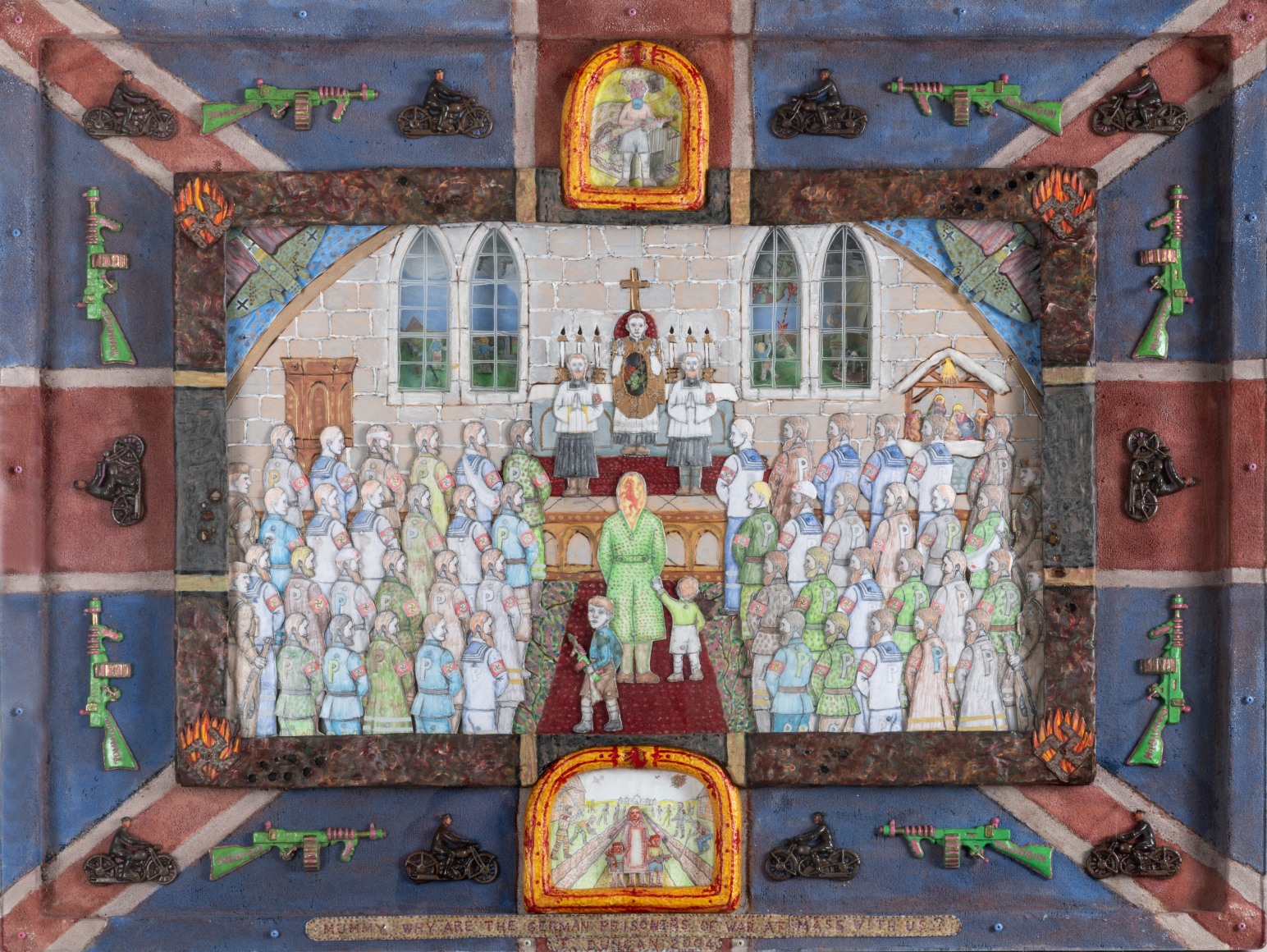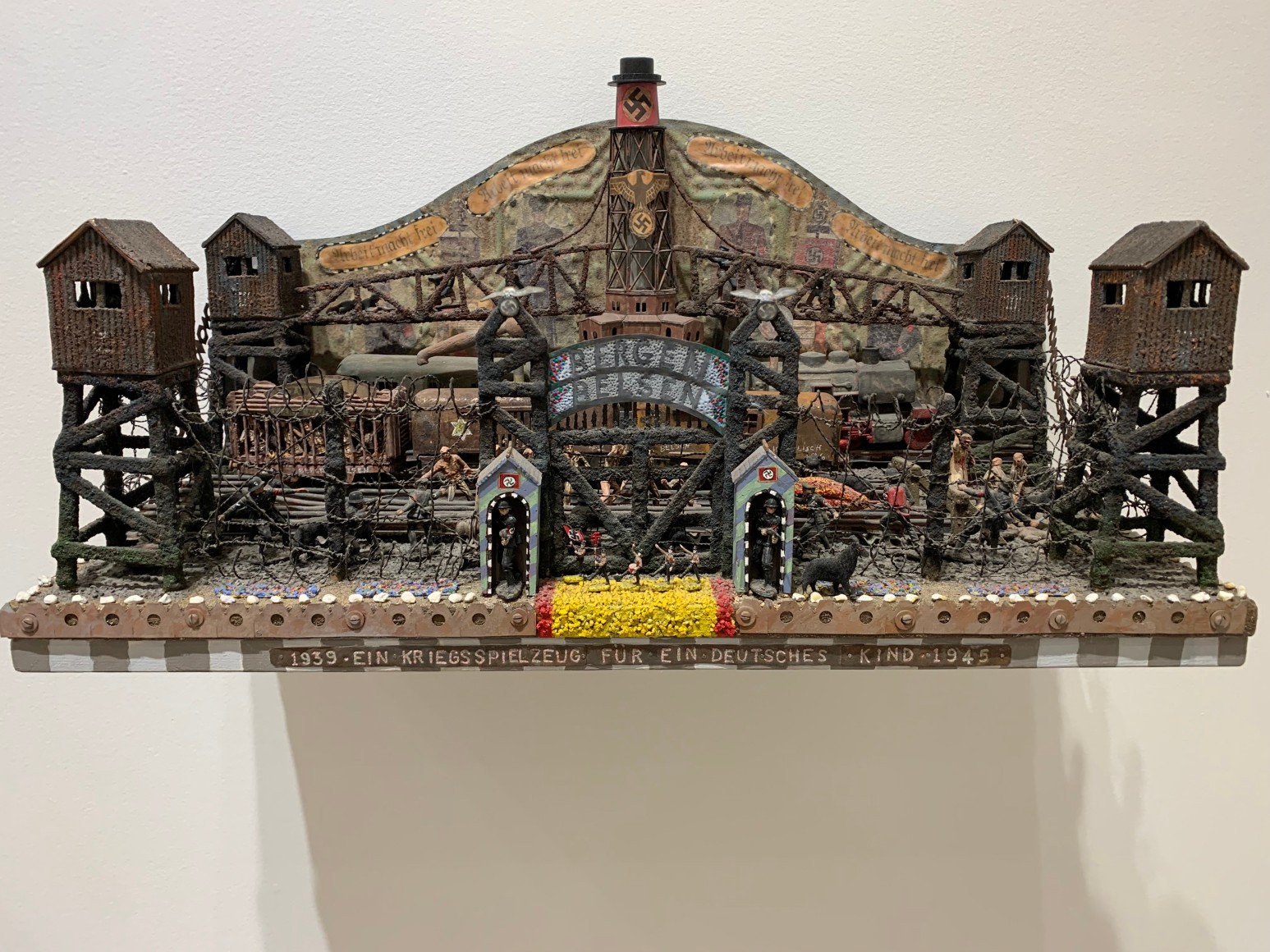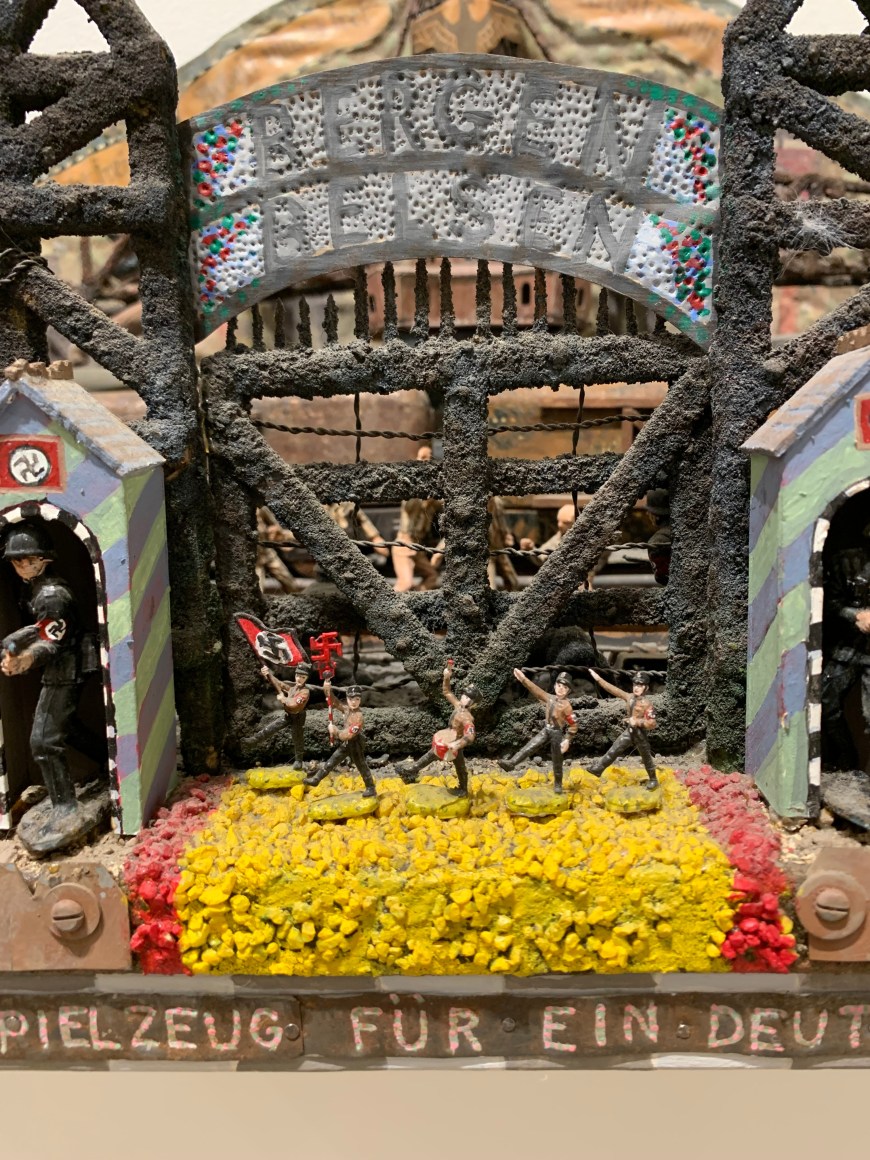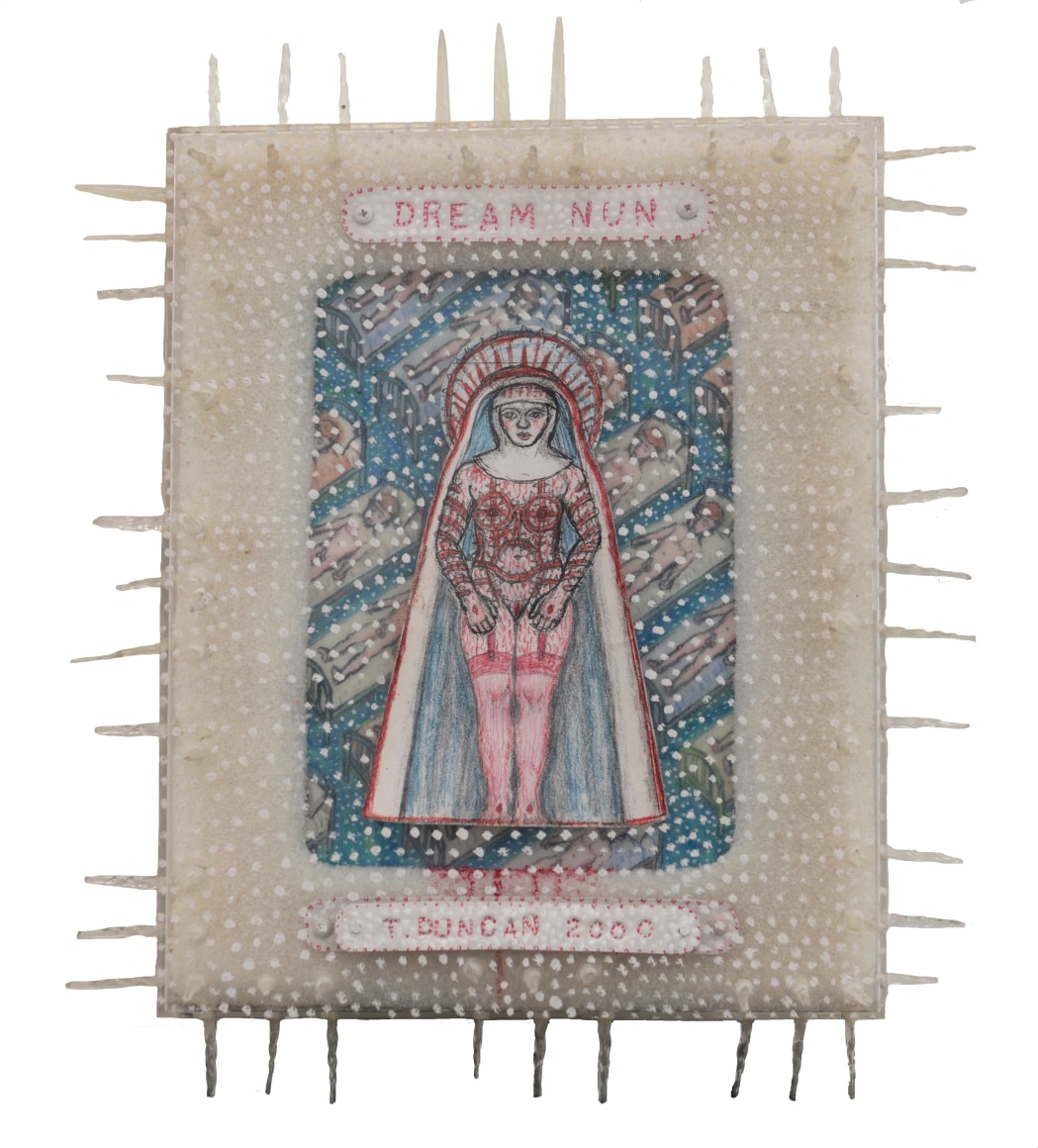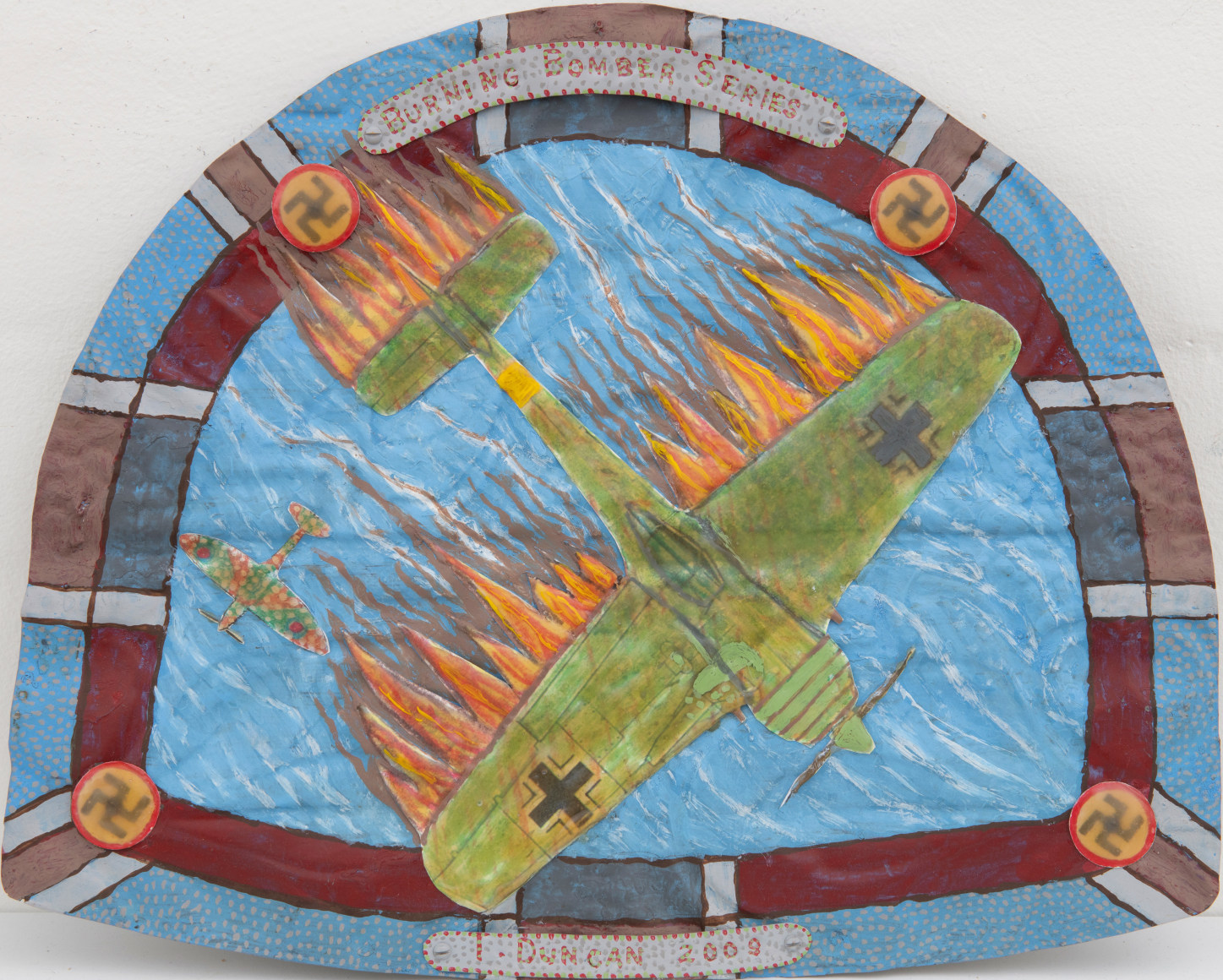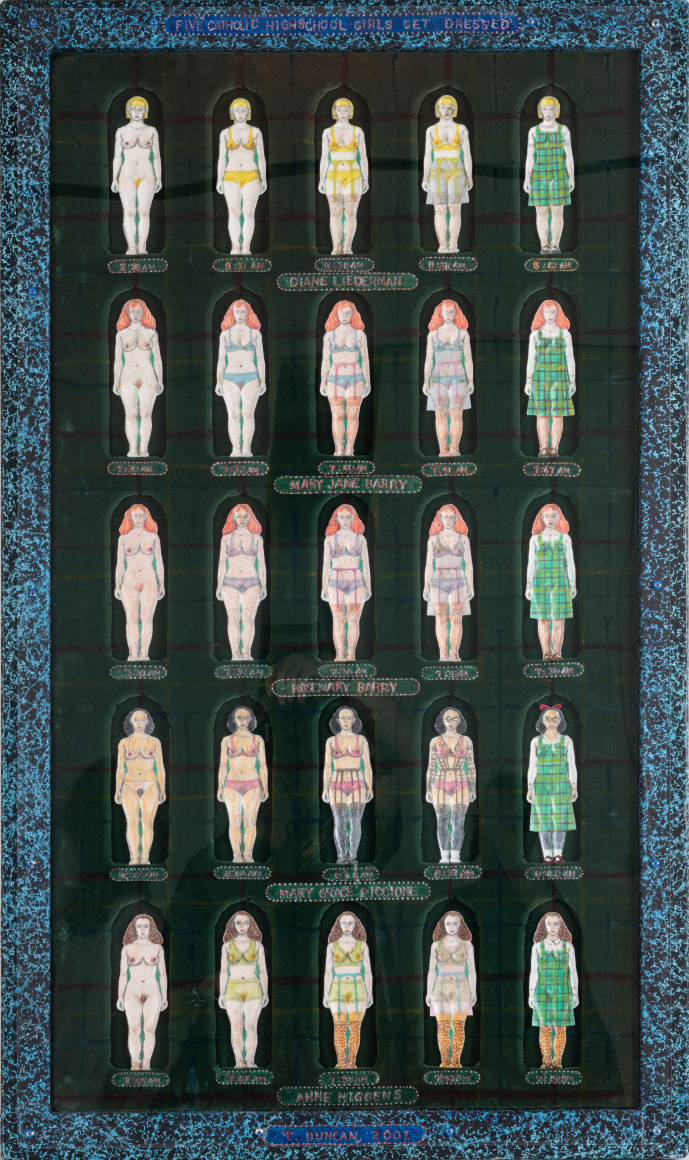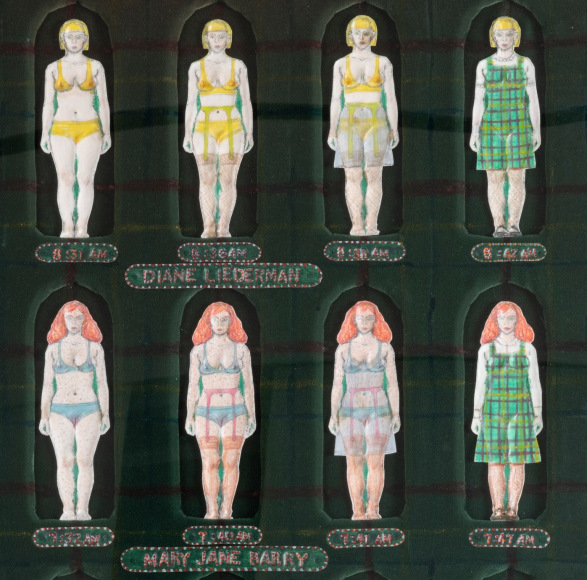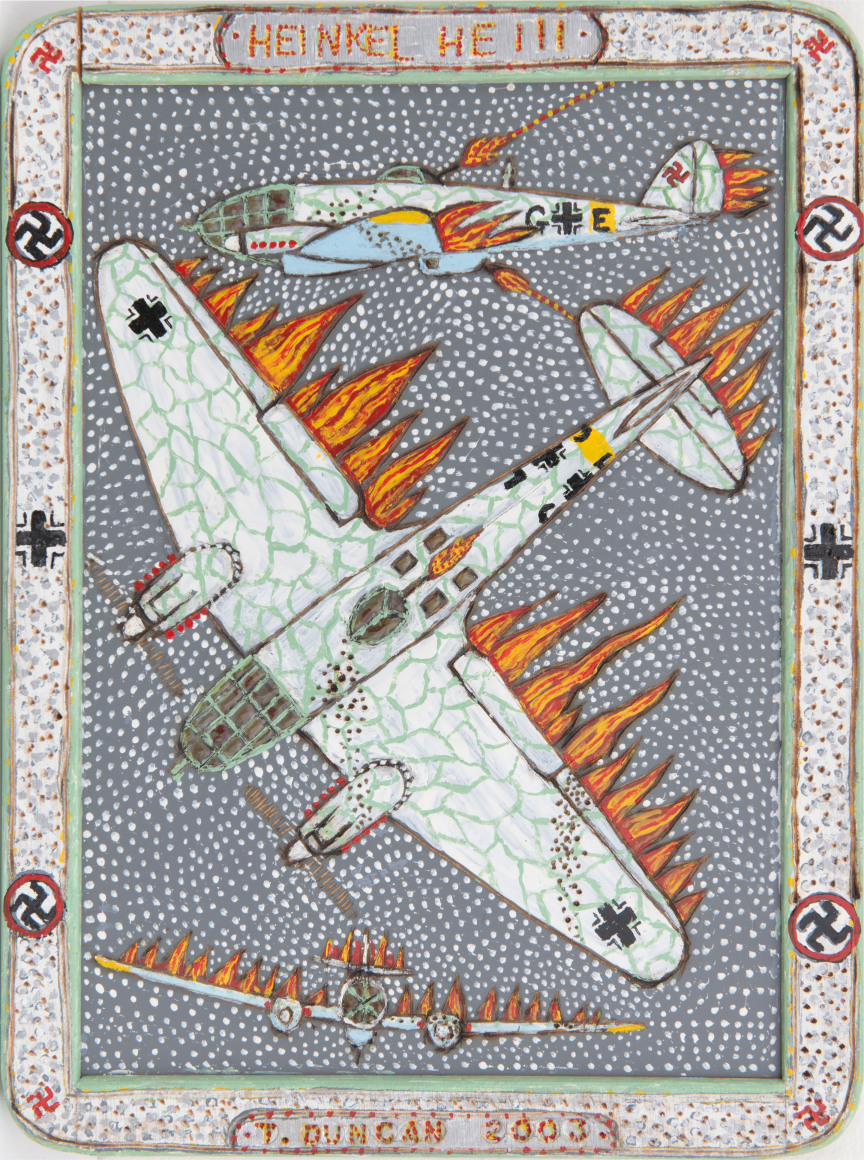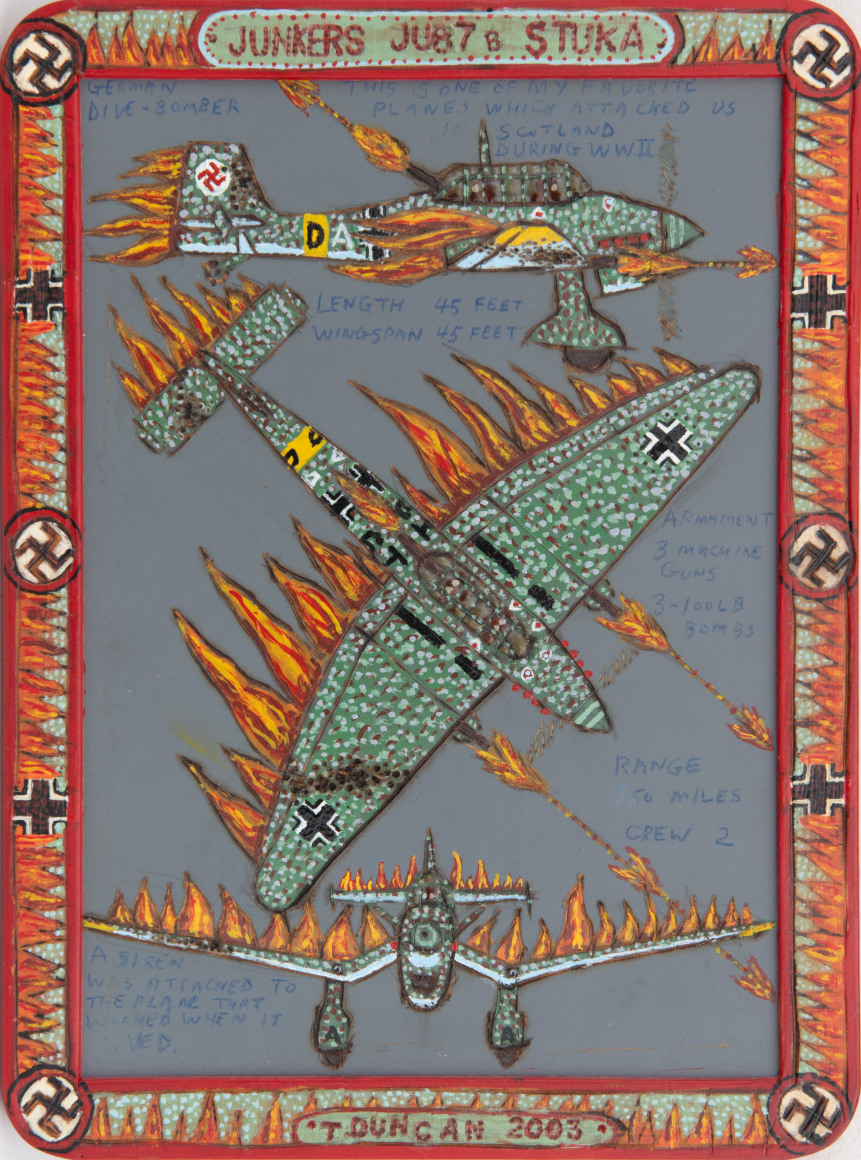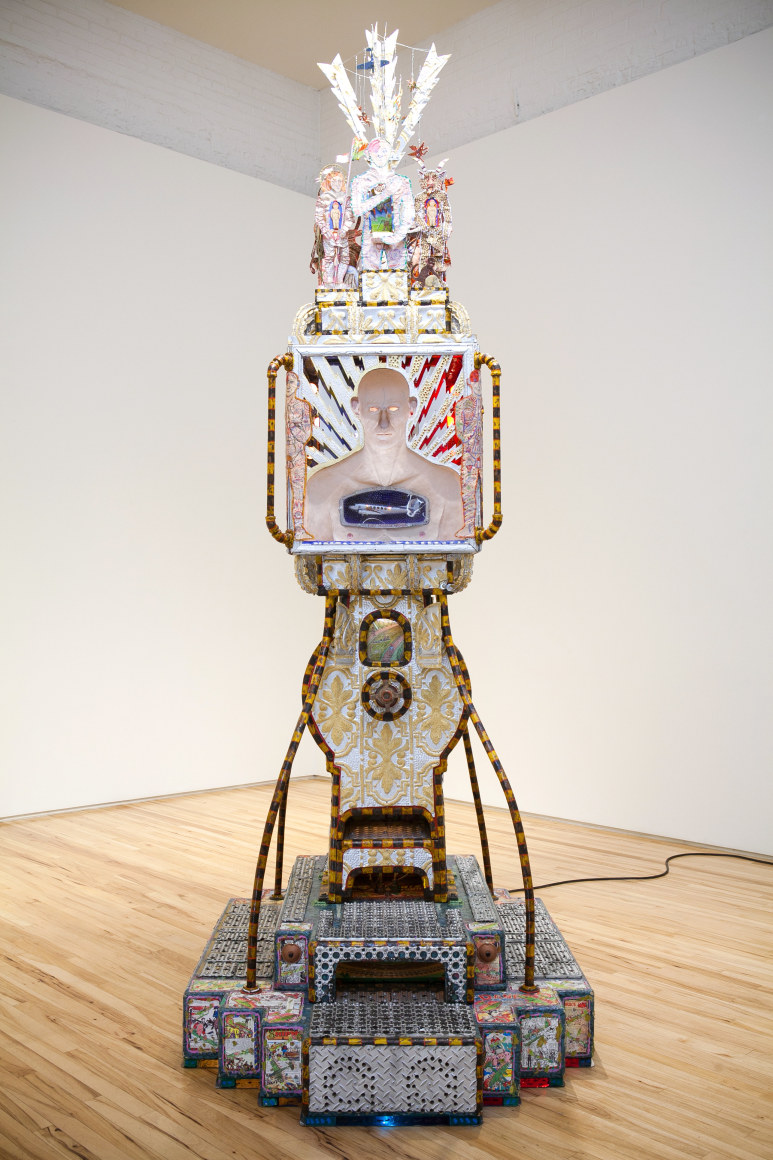Tom Duncan: …It Isn’t Even Past
July 13 – August 18, 2023
Andrew Edlin Gallery is pleased to present …It Isn’t Even Past, its fourth solo exhibition for Scottish-born, New York City artist Tom Duncan (b. 1939), featuring his intricately constructed, mixed-media sculptures. Duncan explores the intertwined nature of personal and public history. Events of the Second World War—air raids over Britain, the execution of Private Eddie Slovik—are rendered within the visual language and aesthetic sensibility of a young boy consumed by Catholicism, comic books, and the depredations of history.
Born in Shotts, a mining village about halfway between Glasgow and Edinburgh, Duncan spent his early childhood there until emigrating to the United States, specifically the Bronx, in 1947. After attending classes at the Art Students League and the National Academy of Art from 1959 to 1964, he began working for the New York Port Authority where he built architectural models, including the original iterations of the World Trade Center. Much like Joseph Cornell, Duncan has prowled the city's streets and junk shops for the cast-off materials that enrich his creative vocabulary. Discarded toys, figurines, and mechanical bric-a-brac are integrated with elaborate handmade cabinets to depict dynamic scenes of real and imagined memory. The process of collection, selection, and fashioning is meticulous —some of his larger sculptures have taken over twenty-five years to complete.
Portrait of Tom with a Migraine Headache is one such piece. At a height of nearly eleven feet this interactive sculpture is composed of vividly painted colored industrial materials, toy trains, human figures, model planes, comic book pages, hand-drawn scenes, metal, glass, enamel, wheels, dials, and knobs — its overall effect fusing Hindu temple and Coney Island arcade. The four-sided monolith allows viewers to step onto its base and operate the knobs and wheels that control the lights (sunset and sunrise can be simulated), trains, and circular displays of Duncan’s drawings of remembered incidents. Viewers can also place their heads in close proximity to the four life-size representations of the artist’s own head and shoulders as seen from front, back, and sides.
Duncan was deeply affected by the air raids against Britain, as well as the presence of a German POW camp nearby his village. He gives his memories explicit expression in Die Nazi Swine, a mixed media piece depicting a boy in short pants firing lightning-like red bolts of flame at attacking planes. His weapon, though, is an upended stool whose four legs serve as gun barrels.
Duncan’s evocations of war trauma extend beyond his personal experience to include one of the war’s less valorous episodes. The Execution of Private Slovik is a theatrical-looking construction that grapples with the case of Eddie Slovik, an American army private who was accused of desertion, court-martialed, and executed in 1945. He was the only American soldier to meet this fate since the Civil War. A beaten-up footlocker sits on top a metal crate ringed round by toy soldiers. Inside it a diorama visible through a glass window shows the moment the firing squad shoots Slovik. The bullets and their trajectories are physicalized by lengths of taut wire painted red and yellow that run from the rifle muzzles straight to Slovik’s chest.
Duncan cites Flannery O'Connor as an abiding influence. His images evoke the uncanny and can be unsettling, involving viewers in a narrative much like good fiction. Set as they are within seductively theatrical cabinets (that some pieces resemble altars seems no accident), the dramatic scenes possess at once the depth of storytelling as well as the epiphanic flash of poetry. In his recurring depictions of wartime violence as seen through the eyes of a child, history is particularized, personalized, and charged with mystery. The past, as another Southern author, William Faulkner, once said, isn’t dead, it isn’t even past.
Tom Duncan is represented in the permanent collections of the Box Art Museum, Hoghem, Sweden and the New Museum of Contemporary Art in New York. Notable exhibitions include Super Rough curated by Takashi Murakami for the Outsider Art Fair (2021), Raw Vision: 25 Years of Art Brut (2014) at Halle Saint Pierre, Paris, a solo presentation at the Armory Show in New York (2013) and The Art of War and Peace: Toward an End to Hatred (2002) at the American Visionary Art Museum, Baltimore. A documentary film, Tom Duncan: The Art of War and Peace, directed by Dean Kemph, was produced in 2003.

